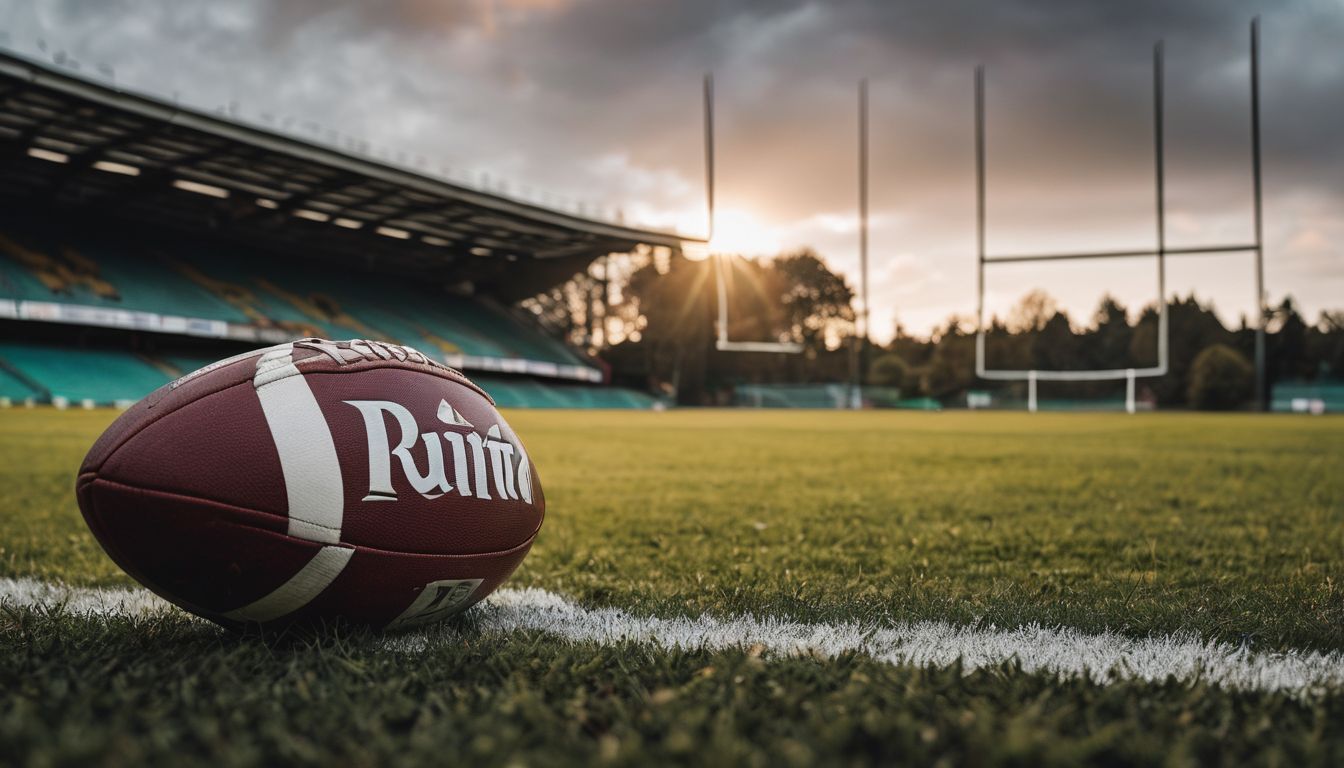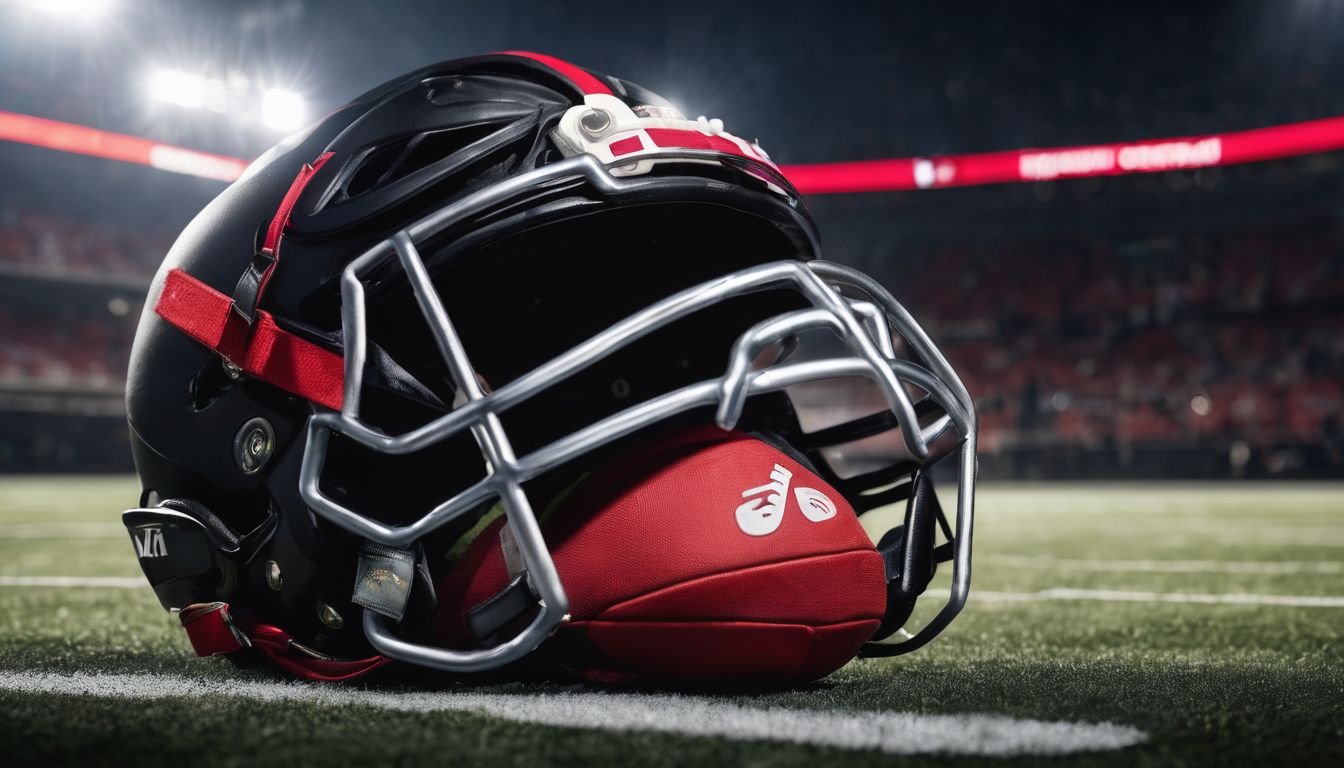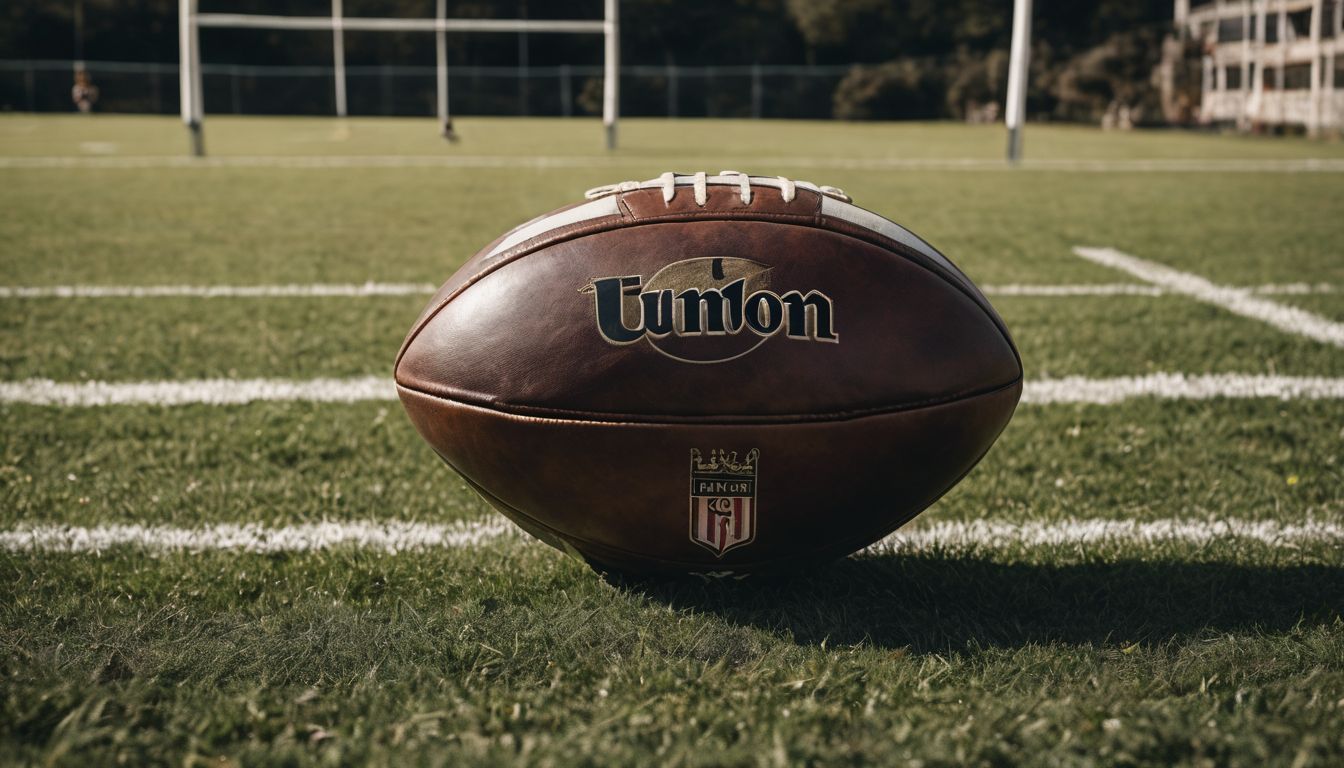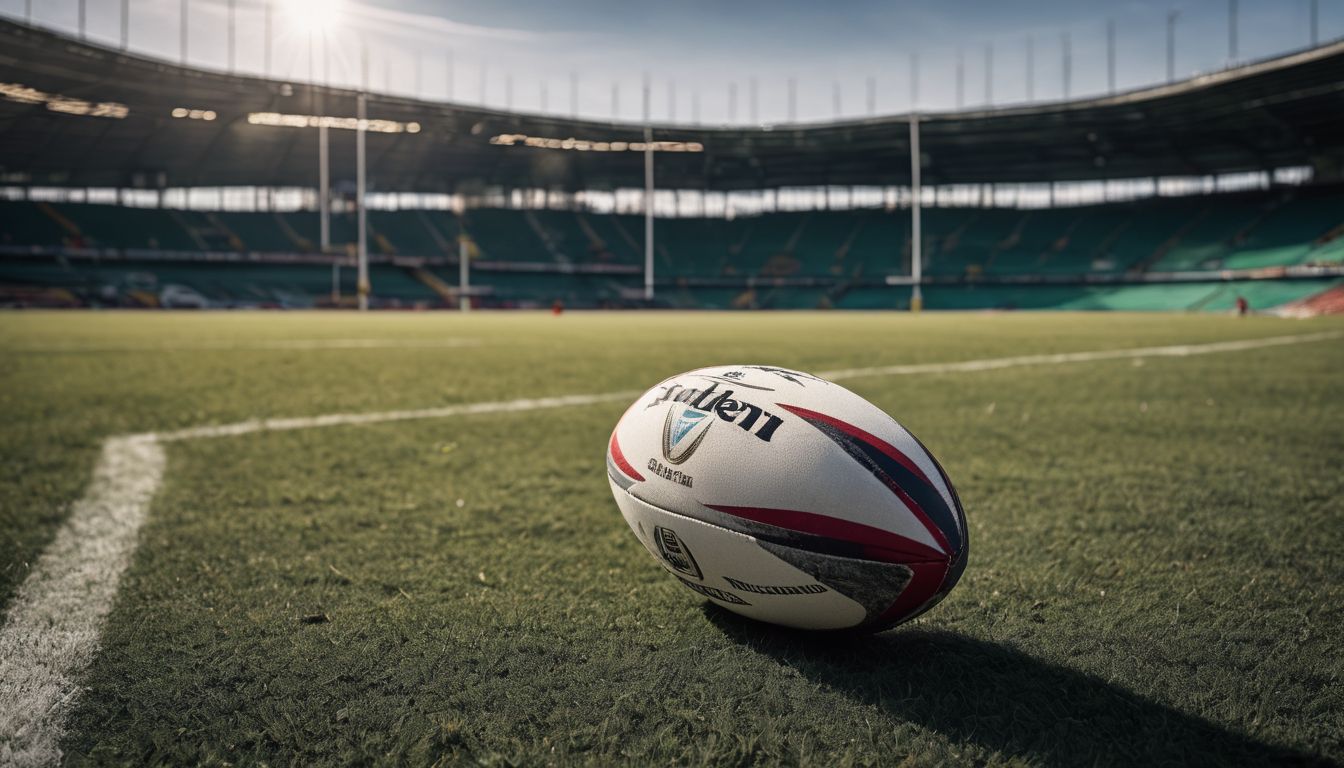Ever wondered why certain rugby players are praised for their electrifying sprints to the try line? Wingers, as these speedsters are called, possess a unique set of skills that make them essential to any rugby team.
Our guide will delve into the role of wingers and how they combine pace with skill to dazzle on the pitch. Get ready for an exciting run through their world!
Key Takeaways
- Wingers are the rugby players who use their speed and agility to score tries, making them crucial in attacking plays.
- They support the full – back defensively, covering large areas of the pitch to prevent opposition attacks.
- In sevens rugby, wingers must adapt by using their endurance and pace to exploit increased open space for successful offensive strategies.
- Essential skills for a winger include fast sprinting, effective tackling, accurate catching, and good passing abilities.
- During scrums and lineouts, positioning is key for wingers; they need to be ready to attack or defend according to how play unfolds.
Overview of the Winger Position
The winger position in rugby has a rich history and is an integral part of the backline. Wingers are known by different names in various regions, but their role as key attacking players remains consistent.
History of the winger position
Throughout the history of rugby, wingers have evolved to become some of the most thrilling players on the field. Initially, their role wasn’t as defined as it is today; they often played on the periphery and didn’t see much of the ball.
As rugby tactics developed, coaches recognised that swift players could be lethal in wide spaces. This realisation led to a transformation in how wingers were used. They began to plan moves specifically for these fast athletes, turning them into essential try-scorers.
In modern rugby strategy, wingers hold a prestigious place as key attackers who finish moves initiated by teammates. Their evolution continued with changes in training methods and playing styles favouring agility and speed over mere physicality alone.
Evident from their electrifying runs down the touchline and acrobatic dives into the try-zone, today’s wing players are evidence of rugby’s dynamic progression over time. With distinct roles such as scoring tries and breaking through defences, wingers epitomise how specific positions can shape a sport’s tactful development over years of gameplay refinement.
Names used for wingers
Wingers in rugby are commonly referred to as the left wing and right wing. They occupy these positions according to their placement on the field, with the left winger traditionally wearing number 11 and the right winger wearing number 14.
In some instances, they are also known as “winger” or “wing.” These names reflect the primary role of these players, which is to utilise their speed and finishing ability to score tries for their team.
The left and right wingers play a crucial role in providing attacking options for their team, often utilising their pace to exploit gaps in the opposition’s defence. Known for their agility and electrifying runs down the touchlines, wingers can turn a game around with just one impactful play.
The Role of Wingers in the Backs
Wingers play a crucial role in providing attacking options for the team, using their speed and agility to exploit space on the flanks. They also have an important defensive role in supporting the full-back and covering any defensive lapses in the backline.
Providing attacking options
Wingers play a crucial role in providing attacking options for their team. With their exceptional speed and agility, they create opportunities by running onto the ball at pace, often evading defenders to gain valuable ground.
Their ability to beat opponents one-on-one and exploit any gaps in the defense adds dynamism to the team’s offensive play. Wingers are pivotal in stretching the opposition’s defense out wide, forcing them to cover more ground and creating space for their teammates closer to the middle of the field.
This not only gives their team more room to maneuver but also increases scoring chances as it puts additional pressure on the opposing team.
Supporting the full-back
Wingers support the full-back by providing a quick outlet for defensive kicks and offering an additional passing option in attack. They must be ready to cover space behind the full-back, ensuring that there are no gaps left open for opposition attackers to exploit.
Wingers play a crucial role in both attack and defense, as they work closely with the full-back to ensure solid coverage across the backline.
In addition to supporting the full-back, wingers must also anticipate attacking opportunities and be prepared to make dynamic runs down the touchline when required. By staying connected with their teammates and maintaining awareness of their positioning on the field, wingers can effectively contribute to their team’s overall strategy.
Covering for defensive lapses
Wingers play a crucial role in covering for defensive lapses, using their speed and agility to make up ground quickly and prevent opposition players from scoring. They are responsible for tracking back when the opposing team breaks through the defensive line, providing support to the full-back or other teammates to stop potential tries.
Wingers use their awareness and quick decision-making to assist in regaining possession of the ball and turning defense into attack.
When it comes to covering for defensive lapses, wingers need to anticipate potential threats on the field and react promptly without hesitation, ensuring that they fulfill their vital role in preventing conceding points.
The Role of Wingers in Set Plays
Positioning in scrums and lineouts requires wingers to be ready to receive the ball and attack. In rucks and mauls, wingers must also support their teammates while maintaining awareness of potential counter-attacks from the opposition.
Positioning in scrums and lineouts
Attacking and defending in rucks and mauls
After positioning in scrums and lineouts, wingers play a crucial role in attacking and defending in rucks and mauls.
- Wingers are essential in rucks, using their speed to reach the breakdown quickly and secure possession for their team.
- They also play a key role in supporting the ball carrier by providing options for quick offloads or running support lines.
- Defensively, wingers must be adept at identifying threats around the ruck area and making effective tackles to halt opposition attacks.
- In mauls, wingers contribute by providing additional strength to drive the maul forward or disrupt the opposition’s maul by applying pressure from the side.
Essential Skills for Wingers
Wingers in rugby need to possess good speed and agility, strong defensive and tackling abilities, as well as proficient catching and passing skills. These essential skills enable them to excel in their position on the field.
Speed and agility
Wingers in rugby need exceptional speed and agility to outpace and evade opponents. Their ability to swiftly change direction and burst into gaps is essential for breaking through the defensive line and scoring tries.
Speed allows wingers to exploit open spaces, while agility enables them to maneuver around defenders, creating opportunities for their team’s attacking moves. Additionally, their quick reflexes help them react rapidly to changing game situations, making them formidable assets in offensive plays.
The combination of speed and agility makes wingers elusive on the field, often leaving defenders struggling to keep up. This attribute not only benefits the individual player but also contributes significantly to the overall strategy of the team by providing a dynamic edge in attacking tactics.
Defensive and tackling abilities
Wingers must also be proficient in defensive tactics and tackling abilities. Their role extends beyond scoring tries, requiring them to effectively stop opposition attacks and prevent opposing wingers from breaking through.
The winger’s speed is a great asset when chasing down opponents or covering the field defensively, allowing them to make crucial tackles and force turnovers. Wingers need to master the art of tackling – bringing down players who are often bigger and stronger than they are.
Transition:
Catching and passing skills
Wingers must possess exceptional catching and passing skills to contribute to the team’s attacking play. Quick reactions and precise hand-eye coordination are essential for successful receptions of passes from teammates.
Additionally, wingers need accurate passing abilities to distribute the ball effectively when executing attacking moves or initiating counterattacks, showcasing their pivotal role in linking up with other backs and maintaining possession during fast-paced gameplay.
Furthermore, developing strong catching and passing skills allows wingers to swiftly capitalise on scoring opportunities while also assisting in setting up tries for their teammates.
Special Considerations for Wingers in Sevens Rugby
Sevens rugby requires wingers to have increased open space, endurance, and speed, along with an emphasis on support play. To learn more about how wingers adapt their role in sevens rugby, keep reading.
Increased open space
Wingers in sevens rugby encounter increased open space, necessitating exceptional speed and agility to exploit gaps. They must capitalise on the extra room to execute electrifying runs and evasive manoeuvres, crucial for gaining ground and scoring tries.
This emphasises the wingers’ role as powerful strike weapons, capitalising on their swift acceleration and nimble footwork to maximise opportunities within the expansive field.
The transition from fifteens to sevens brings an intensified demand for endurance alongside rapid bursts of pace. As a result, wingers are required to exhibit consistent speed throughout extended periods while demonstrating quick reactions in response to changing game dynamics.
Need for endurance and speed
Wingers must possess exceptional speed and endurance to cover long distances during a match. They need to sprint across the pitch, chasing down opponents or making blistering runs to score tries.
Additionally, wingers have to maintain their high energy levels throughout the game, as they often find themselves covering large areas of the pitch in both attack and defence. With their explosive pace and sustained stamina, wingers play a crucial role in stretching the opposition’s defence and capitalising on scoring opportunities.
The demand for speed is synonymous with the winger position; however, underpinning this trait is also an essential need for enduring physical exertion. Wingers are required not only to make quick sprints but also consistently contribute over extended periods without flagging.
Emphasis on support play
Transitioning from the need for endurance and speed to the emphasis on support play, wingers are crucial in providing support to their teammates during attacking plays. Utilising their speed and agility, wingers position themselves strategically to receive passes from their fellow players as they advance towards the opposition’s goal line.
They also play a vital role in supporting the full-back when counter-attacking or dealing with high balls, ensuring that possession is maintained and opportunities are created. Wingers’ ability to offer continuous support greatly enhances a team’s attacking options and enables them to capitalise on scoring opportunities.
In set plays such as lineouts and scrums, wingers actively contribute by positioning themselves strategically to provide effective passing options for their teammates. This quick decision-making ability allows them to swiftly execute attacking moves while maintaining positional integrity within the team structure.
Conclusion
In summary, wingers hold a crucial role in rugby by providing attacking options, supporting the full-back, and covering defensive lapses. They contribute to set plays by positioning strategically and participating in scrums and lineouts.
Essential skills such as speed, agility, defensive capabilities, catching, and passing are vital for their success on the field. Additionally, wingers adapt to special considerations in sevens rugby through increased open space and an emphasis on support play.
FAQs
1. What does a winger do in rugby?
In rugby, the role of wingers is to score tries using their speed and agility, handle the ball with care, and execute key offensive plays.
2. How important are wingers in a team’s rugby strategies?
Wingers are crucial for rugby strategies as they often complete the rugby formation by playing on the edges and use their skills to outmaneuver opponents during offensive play.
3. Can anyone be a winger or do you need certain skills?
To be an effective winger in rugby, players need good handling skills, speed, agility, and the ability to perform under pressure when scoring tries or defending.
4. Do wingers have defensive responsibilities in rugby too?
Yes! While known for attacking roles, wingers also apply Rugby defensive tactics;they must know how to defend as well by positioning themselves strategically against opposing wing players.
5. Are there different workout routines for right-wing and left-wing positions in rugby?
While many core Rugby player workouts benefit all positions,rugby winger workouts might focus more intensely on developing particular aspects like acceleration that enhance performance specific for right-wing or left-wing roles.









